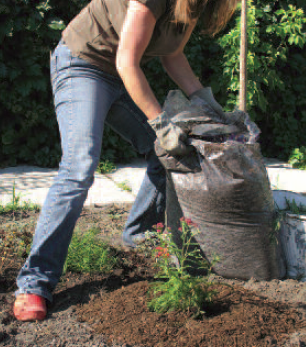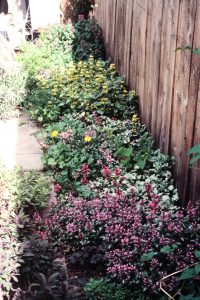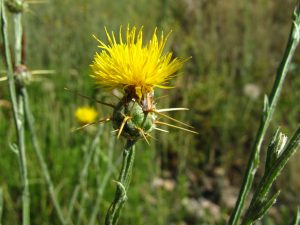Be water-wise and still have a beautiful yard
Whether you are planting, watering or weeding, conservation principles can help, because implementing water-wise practices in your landscape can help to reduce issues like plant disease, fungus, and weeds. Looking for information and inspiration? Visit SLC GardenWise. Also, check out these resources with tips for keeping beautiful landscapes and gardens, even in Utah’s cool, high desert climate:
11 Tips to Reduce Water Use in the Landscape
-
1. Water less.
-
Really, it’s that simple. We over-water and that’s a fact. Water weekly, not daily. When landscapes are over-watered, roots grow shallower, becoming more susceptible to the effects of changing temperatures. Watering less frequently but more deeply will encourage roots to go deep. Yes, some plants might wilt, some leaves may fall, but the landscape will survive, and we’ll save water. A simple strategy? Wait a day to water. However often you’re watering, wait a day longer.
2. Don’t rip out your lawn and replace it with gravel.
-
This knee-jerk reaction amplifies the “urban heat island” effect that increases the day and night temperatures in our urban and suburban areas. Big patches of gravel increase air and soil temperature, and the surrounding plants may need more water. And it makes your house hot, too, increasing your need for air conditioning. This simply moves the water use from your home to the electrical generating stations where huge amounts of water are used for cooling the generating equipment. Consider low-water alternatives, including non-traditional grasses, groundcovers, or just make the lawn footprint smaller. Visit www.slcgardenwise for information and inspiration.
3. Control the controller.
-
Smart controllers are nifty, but they don’t understand the “big picture.” Either reprogram your controller to water only weekly or consider turning off the auto-settings and turning it on manually. Also, take advantage of all those clever features and water your lawn in a cycle/soak pattern. This means that, over the course of the night, the sprinklers run in multiple, short intervals. This will allow water to soak into the soil and reduce runoff. To learn more, visit outdoor tips at www.slc.gov/utilities/conservation.
4. Don’t assume you need to water.
-
Yes, it’s hot. And we haven’t had much rain. But before you water, do a simple test to see if the soil is dry: take a long (6 to 8-inches) screwdriver and plunge it into the soil, the lawn, the garden. If the screwdriver goes in easy, the soil is moist. And if it doesn’t go in all the way, where it stops is the soil moisture level. Don’t water if the screwdriver can go in two or more inches.
5. Focus on watering trees and shrubs.
-
They are more expensive to replace than your lawn and take a whole lot longer.
6. Pile it on thick
-
Mulch helps soil stay cooler, retain moisture longer, and suppresses weeds. Apply a layer 3 to 4-inches deep around your trees, shrubs, and perennials. But put it at the root zone, don’t pile it against the trunks of trees and shrubs.
7. Stay calm and get a Water Check.
-
Sign up. Now. Okay, so, stay calm but get a move on while appointments are still available. Visit cwel.usu.edu.
8. Don’t freak about the brown spots!
-
Your lawn is tougher than it looks and is pretty drought resilient. Come cooler days, it’ll green up again. And if it doesn’t, overseed with a low-water grass. Like SLC Turf Trade (available later this year. Really, you don’t want to be watering every day to establish a new lawn right now, right?!).
9. Go bagless.
-
Grass clippings help shade tender new blades, keep the soil cool, and help to retain moisture. Grass clippings are also a great source of nitrogen, reducing the need for fertilizer.
10. Check your sprinklers.
-
Ideally, every time you mow, but at least once a month. Look for tilted and cracked spray heads (that could be what’s causing those brown spots!) Adjust nozzles so they don’t spray the driveway, sidewalk, or other hard surfaces.
11. Mow high.
-
There is a direct relationship between the length of grass blades and root depth. When you let your lawn grow to 3, 4, or even 5 inches tall, roots grow deep. Deep roots need less water. Short lawns make shallow roots, and shallow roots need more water.


